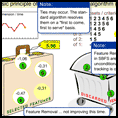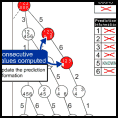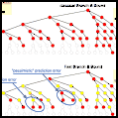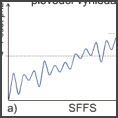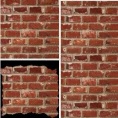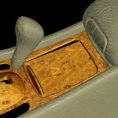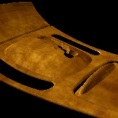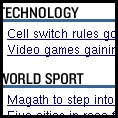Topics
- 3D Data Modelling
- Benchmarking
- Classification
- Content Based Image Retrieval (CBIR)
- Dynamic Textures
- Illumination and Rotation Invariance
- Image & Video Analysis / Processing
- Machine Learning
- Mathematical Image Modelling
- Medical Image Recognition
- Multidimensional Texture Modelling
- Multispectral Textures
- Pattern Recognition
- Probabilistic Expert Systems
- Probabilistic Neural Networks
- Probabilistic Texture Synthesis
- Sampling Based Texture Synthesis
- Spatial Data Modelling
- Statistical Pattern Recognition
- Textural Features
- Texture Editing
- Texture Segmentation
- Visual quality measures
A Roller - Fast Sampling-Based Texture Synthesis Algorithm
Abstract:
A method for synthesizing natural textures that realistically matches given colour texture appearance. The novel texture synthesis method, which we call the roller, is based on the overlapping tiling and subsequent minimum error boundary cut. An optimal double toroidal patch is seamlessly repeated during the synthesis step. While the method allows only moderate texture compression it is extremely fast and easily implementable in a graphical hardware for purpose of real-time rendering.Non-linear Reflectance Model for Bidirectional Texture Function Synthesis
Abstract:
A rough texture modelling involve huge image dataset - the Bidirectional Texture Function (BTF). This texture function is 6-dimensional depending on planar texture coordinates as well as on view and illumination position. The main contribution of this work is a new non-linear reflectance model which enable to synthetise BTF of a rough materials with complicated anisotropic properties. The model is based on modified and extended Lafortune reflectance model computed per each texel. The extension consist in adding a few spectral parameters for each BTF image which are linearly estimated according to original data in second estimation step. A model parameters are computed for every surface reflectance field contained in original BFT data. The final memory BTF data storage demands are with using of this technique reduced in ratio 1:15 when the synthetised images are almost indiscernible from originals. The method is universal, robust and easily implementable in a graphical hardware. Fast Bidirectional Texture Function Modeling based on 2D Causal Auto-Regressive model
Abstract:
The bidirectional texture function (BTF) describes rough texture appearance variations due to varying illumination and viewing conditions. Such a function consists of thousands of measurements (images) per sample. Resulted BTF size excludes its direct rendering in graphical applications and some compression of these huge BTF data spaces is obviously inevitable. In this paper we present a novel fast probabilistic model-based algorithm for realistic BTF modelling allowing such an efficient compression with possibility of direct implementation inside the graphics card. The analytical step of the algorithm starts with the BTF space segmentation and range map estimation of the BTF surface followed by the spectral and spatial factorisation of selected sub-space multispectral texture images. Single monospectral band-limited factors are independently modelled by their dedicated causal autoregressive models (CAR). During rendering the corresponding sub-space images of arbitrary size are synthesised and both multispectral and range information is combined in a bump mapping filter of the rendering hardware according to view and illumination positions. The presented model offers huge BTF compression ratio unattainable by any alternative sampling-based BTF synthesis method. Simultaneously this model can be used to reconstruct missing parts of the BTF measurement space.Text Classification Using Mixture Models
Abstract:
The goal of text document classification is to assign a new document into one class from the predefined classes based on its contents.

